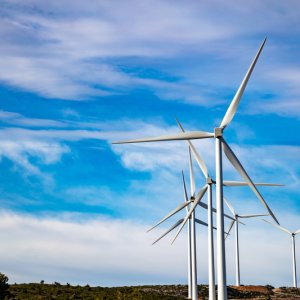
Dogger Bank, World’s Potentially Largest Wind Farm
 By Cas Biekmann | Journalist and Industry Analyst -
Fri, 05/22/2020 - 16:00
By Cas Biekmann | Journalist and Industry Analyst -
Fri, 05/22/2020 - 16:00
Equinor and SSE Renewables have big decisions to make regarding their offshore wind farm called Dogger Bank. This wind project would be considered the largest of its kind in the world. Last week, Reuters reported that both companies will make the final investment decision on the first two phases by the end of 2020. As wind projects on ever-bigger scale are built worldwide, it could become interesting to re-examine Mexico’s wind potential in Oaxaca and Yucatan.
Irish SSE Renewables and Norwegian Equinor, an oil and gas company wishing to diversify its portfolio toward renewable energy, had been looking for a spot to place Dogger Bank, a joint venture of 50/50 for both companies. The project is to be located at more than 130 km from England’s North East coast. It is expected to start generating energy in 2023. Although decisions regarding US$11.05 billion investments between 2020 and 2026 will need to be made later this year. Last week, the company said it had decided to build a multi-million-dollar facility, which would be located at the port of Tyne with the goal to maintain and operate Dogger Bank.
The wind farm’s power generation is predicted to be 3.6 GW and have a lifetime that will last more than 25 years. This is a large amount of potential, where Mexico stands to benefit, considering its wind potential. Although Mexico is usually renowned for its opportunities regarding solar, wind turbines are considered a great option as well. Companies such as ACCIONA have broken records for wind farms in Latin America, these projects are located in Oaxaca and Tamaulipas, are proof that there are plenty of initiatives to capitalize on this as well.
But Mexico does not present the same landscape as the UK. Social licenses and rights of way, for instance, are crucial for project developers, said Cynthia Bouchot of Energía CB Consultores in an interview with MER. One example of this is the Mareña Renovable project, which in 2012 was blocked for one year by residents in the area who were concerned about how it would affect their fishing capabilities. The local movement eventually triumphed over project interests, reported La Jornada in 2013.
Indigenous Consultations, Social Licenses and Rights of Way can and have been obtained for countless other projects. Currently, private companies are most concerned about regulatory uncertainty, which had been amplified by SENER’s recent publication of a measure pausing crucial tests for renewable projects to be connected to the grid. Even though the policy had been suspended by courts and CENACE subsequently allowed the tests to 23 companies, The Federal Competition Commission is still considering to take legal action.
















